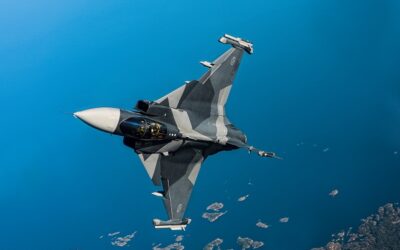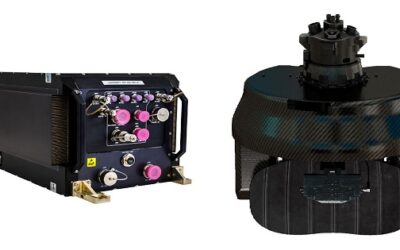Wideband HF with 16 Channels
Following the first test of its developmental wideband HR radio by French forces at the end of 2016, Thales is planning on carrying out a NATO-level demonstration later this year.
The 2016 testing came under the Salamandre project that Thales was contracted by the French DGA defence procurement agency to carry out, and involved a prototype radio transferring web and images.
“We now plan to do a demonstration at NATO level, possibly in September,” Philippe Crambert, technical lead for wideband radios at the company, told media at Thales’ Innovation Days exhibition in Paris on 1 March. A so-called ‘Five Eyes’ demonstration is also being planned, and will help move the radio towards a production phase, for which Thales is in negotiations with the DGA. “Our first target is France, but we are negotiating with other countries around the world,” Crambert said.
HF radios can operate at ranges of multiple hundreds of kilometres, Crambert added, which far exceeds UHF radios that carry out the same task. “Only satellite can compete with HF when it comes to range, but that is expensive,” he said.
Narrowband HF is limited by the data transfer rate, and while developments have been made in recent years, this is still not on par with wideband HF, Crambert noted, adding that the only modern feature is email, and frequencies over narrowband tend to drop in and out of range.
Wideband HF, on the other hand, transmits over several different frequencies, and Thales’ offering has 16 different channels for this with transmission rates that are some eight times better, Crambert said. “The resilience of the link is something that is just as important – or even more important – than the data rate though,” he said.
The radio listens to a wide section of the frequency spectrum, and is able to switch between the different bands automatically with up to four bands running at once.
Thales has also added a digital 4G software upgrade capability to its SOTAS vehicle radio system. The company said that this type of feature is already available for civilian use, but is not commonplace with military users. The new capability is ready to be acquired now, and is in the early stages of rollout. An IP-based system such as this will allow additional services to be added as required, and it will be able to be installed on smartphones and other digital devices.
Only registered users will be able to access the 4G network, and layers of security can be added to the system, including a VPN, the company says.
It adds that most ruggedised military equipment will now have a digital link, opening it up to add the 4G capability on top, which will allow high data rates to be transmitted.
Additionally, because this can be provided as a software upgrade for a central processing unit like SOTAS, it does not burden the radio in any way, and just requires space in the system to accept the new capability.
Beth Stevenson

























